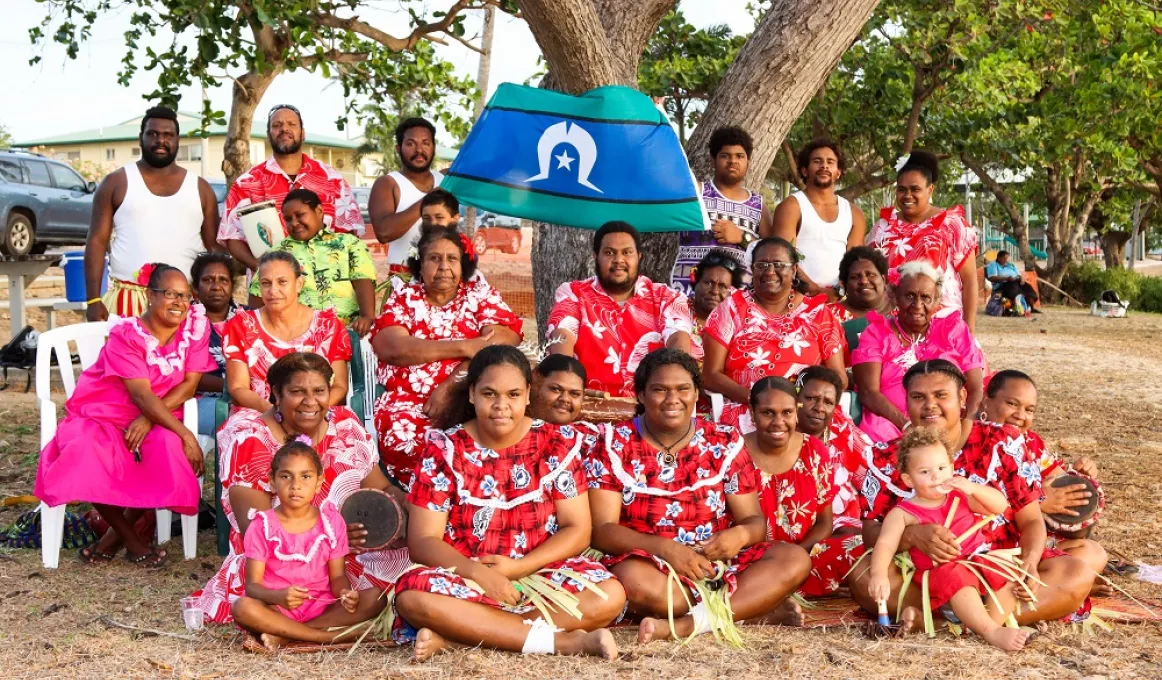Census data helps cultural groups to keep language and culture alive

The Mer Island cultural group Eip Karem Beizam is using Census data to identify a need to increase the number of those speaking Meriam Mer in the community and addressing this need through cultural programs and workshops.
Renowned Torres Strait Islander cultural group from Murray Island (Mer), Eip Karem Beizam, uses Census data to support continuation of culture for the Meriam community living away from Murray Island.
Proud Meriam woman Ofa Mabo is a lead coordinator of the cultural group which has more than 60 members of professional dancers, weavers, linguists, singers, and songwriters.
‘Our mission is to ensure the Meriam people and culture survives for generations to come,’ Ofa said.
‘We are using Census data (publicly available) to help us with this mission. Other cultural groups can also use the Census data to identify opportunities to build a better tomorrow’.
Eip Karem Beizam used Census data to identify a need in the community and address it. The Census revealed low numbers of people speaking Meriam Mer at home. Eip Karem Beziam used Census data to secure funding to run cultural programs and language workshops for Meriam people.
‘Census data reveals that only 1.7% of Torres Strait Islanders spoke Meriam Mer at home, compared to 7% for the Kalaw Lagaw Ya and Kalaw Kawa Ya language groups. The most common language spoken in Torres Strait Islander households was Yumplatok, which is the Torres Strait Creole,’ Ofa explained.
Ofa also works for the Australian Bureau of Statistics as a Census Engagement Manager on Thursday Island. A big part of her role is to make sure communities and islands across the Torres Strait are well informed and prepared to complete the Census.
‘The further we live away from home, the harder it can get to continue speaking and practising language, because we are coming out of the natural environment,’ she said.
Eip Karem Beizam run a number of language programs on Thursday Island, and have travelled extensively to perform and practice culture in Townsville, Sydney and Canberra where Meriam people also reside.
‘We use funds from grants to pay for venues to come together to provide a safe space for the language to be spoken without barriers,’ Ofa explained.
The group relies on Meriam Elders and fluent language speakers to help facilitate workshops and pass on knowledge to younger generations.
‘Statistics prove that Aboriginal and Torres Strait Islander people die younger than non-Aboriginal and Torres Strait Islander people. It is critical that we acknowledge and embrace the wisdom of the Elders that we have now, especially those who are fluent speakers,’ Ofa said.
Ofa is encouraging other Aboriginal and Torres Strait Islander cultural groups to use Census data to support programs that keep Indigenous languages and cultures alive.
Find out more
The 2021 Census will be held on Tuesday 10 August nationally. For people in remote communities, there will be Census field staff there in July and August to help people complete their Census form.
Information and resources to support Aboriginal and Torres Strait Islander communities is available at www.census.abs.gov.au/indigenous or by phone on 1800 512 441.